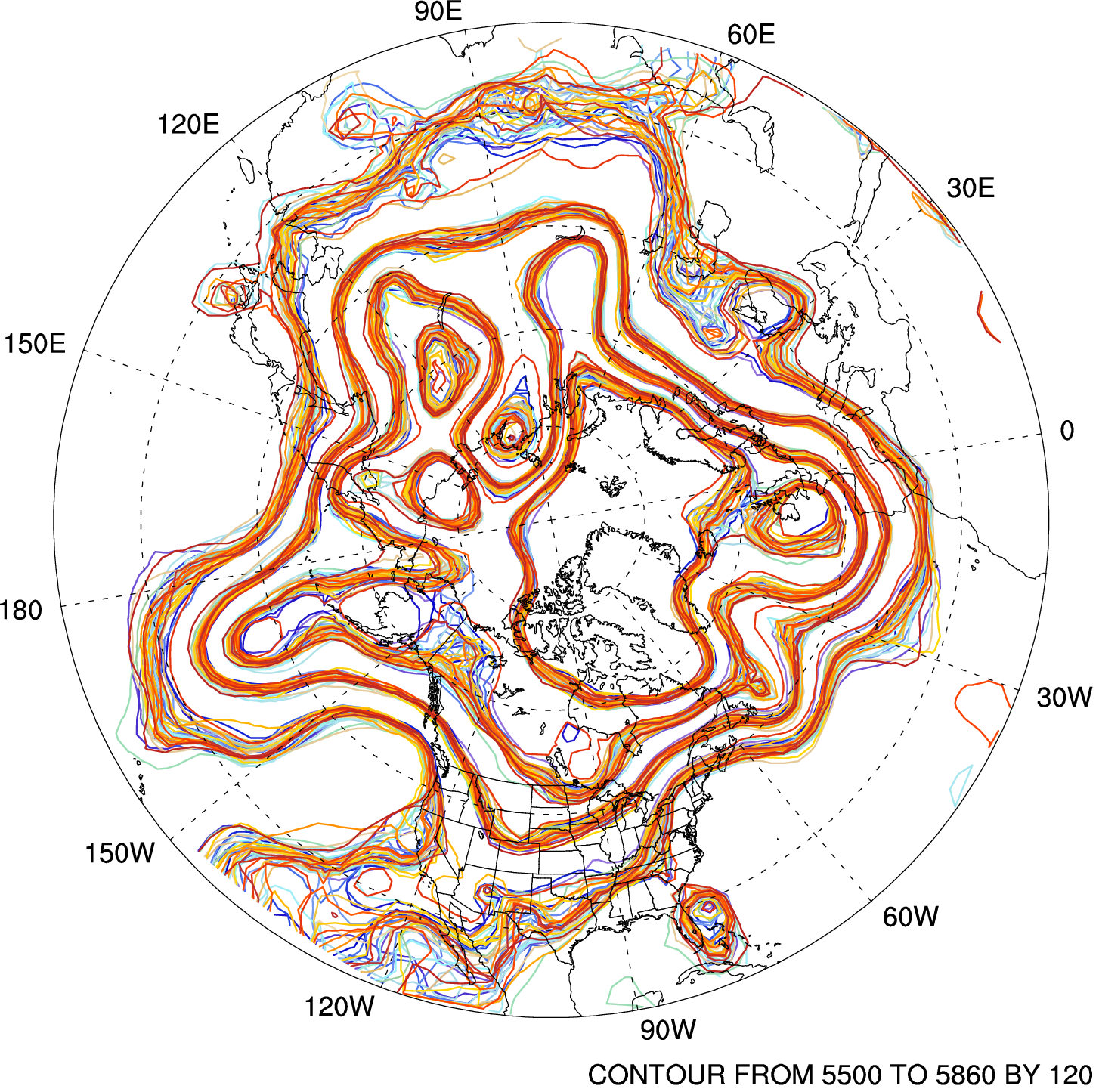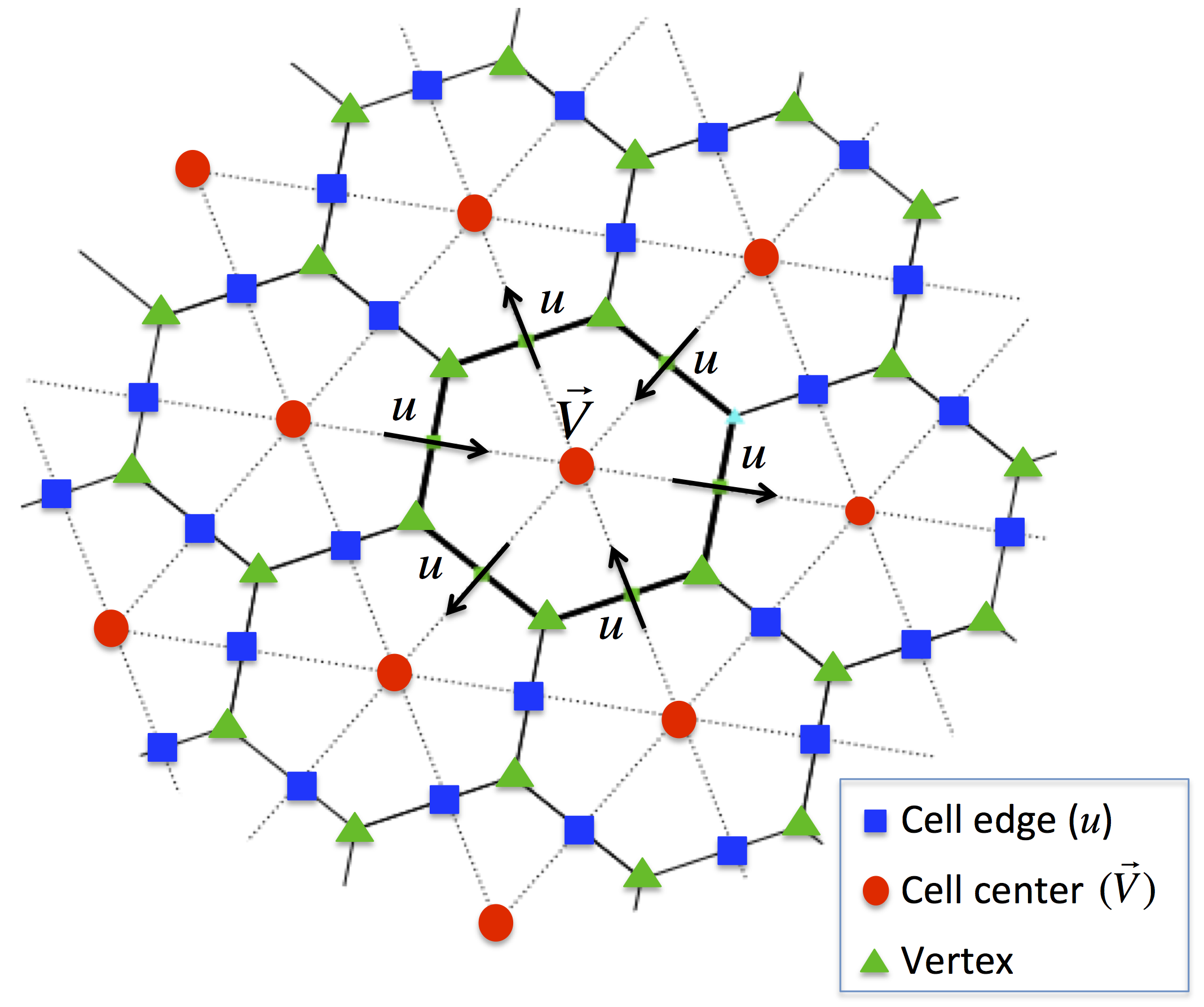Data assimilation for MPAS is available as an ensemble Kalman filter (EnKF) implemented through Data Assimilation Research Testbed (DART). This work is done in a collaborative effort between the Mesoscale and Microscale Meteorology (MMM) Division and the DART development team in the Institute for Mathematics Applied to Geosciences (IMAGe) in the National Center for Atmospheric Research (NCAR).
The latest official release of DART (the "Manhattan" version) includes interfaces for both MPAS-Atmosphere and MPAS-Ocean. To download the code, click here or email dart at ucar dot edu.
In collaboration with NOAA's Earth System Research Laboratory, related efforts are also underway to explore ensemble data assimilation for MPAS-Atmosphere with the Gridpoint Statistical Interpolation (GSI) scheme that is operational at the National Centers for Environmental Prediction. Further collaborations related to MPAS data assimilation are welcome (see contact information below).

Spaghetti diagram of the ensemble analysis in terms of geopotential height at 500 mb valid at 12Z 5 Dec 2008.
 ) using radial basis functions (RBFs).
) using radial basis functions (RBFs). 